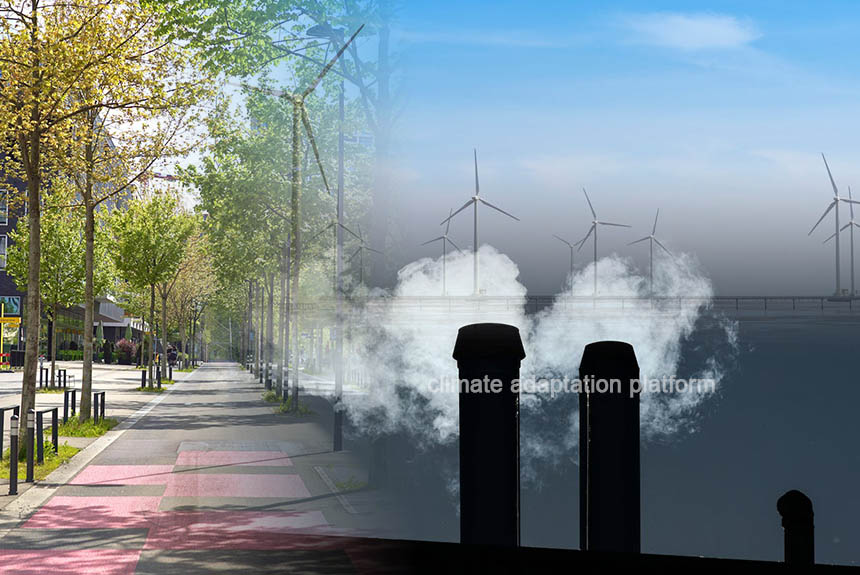As global leaders seek solutions, September’s World Economic Forum (WEF) newsletter spotlighted three critical areas in the fight against climate change: the unseen dangers of black carbon, the development of a renewable energy “superhighway,” and a bold initiative to help cities breathe cleaner air.
These efforts represent a vital piece of the puzzle in addressing the climate crisis, from mitigating emissions to accelerating clean energy and safeguarding public health. Let’s dive deeper into these pressing issues and their global implications.
Black carbon
Black carbon, commonly known as soot, is a component of fine particulate air pollution (PM2.5). It is formed by the incomplete combustion of wood and fossil fuels, creating carbon dioxide (CO2), carbon monoxide, and volatile organic compounds.
Black carbon has recently emerged as a significant contributor to global climate change, possibly second to CO2. BC particles strongly absorb sunlight and give soot its black colour.
Primary sources include emissions from diesel engines, cook stoves, wood burning, and forest fires. Reducing CO2 emissions is essential to averting the worst impacts of future climate change. Although they only last days to weeks in the atmosphere, they directly and indirectly affect the climate, snow and ice, agriculture, and human health.
According to WEF, surface contact of black carbon can accelerate ice and snow melting. Some black carbon in the Arctic comes from shipping, wood and coal heat stoves, and flaring from oil and gas rigs, but mostly from distant sources like forest fires and highly polluting cookstoves.
The loss of reflective snow and ice is set to speed up global warming. As snow melts, it pours more fresh water into the Arctic Ocean, eventually flowing into the North Atlantic. This increase in freshwater reduces the seawater’s density, leading to a slowdown in essential processes like convection, subduction, and water sinking into the deep ocean.
As a result, the Atlantic Meridional Overturning Circulation (AMOC)—a vital system that transports warm water north and cold water south—could slow down or even collapse. This change would have severe consequences worldwide, potentially causing temperatures in the UK and Scandinavia to plummet by 5–15°C within just a few decades.
A major concern is the increasing black carbon emissions from the growing Arctic shipping routes. Between 2013 and 2023, there was a 37% increase in ships entering the Arctic. Heavy fuel oil (HFO) use on most ships is also a problem, but there are cleaner fuel alternatives, such as distillates. WEF reports that the International Maritime Organization has recently banned HFO in the Arctic, but most ships continue to use it.
Renewable “super highway”
In August, Britain’s energy regulator Ofgem approved building a $4.35 billion, 2-gigawatt electricity, 436-kilometre subsea cable “superhighway” from Scotland to Yorkshire, England, that can power up to 2 million homes across Britain.
The project represents the biggest single investment in electricity transmission infrastructure in Britain. It will facilitate the delivery of new offshore wind energy to the market. It aims to help meet the goal of tripling renewable energy investment by 2030 and keep the world on track to hit net zero by 2050.
Construction on the project is expected to begin later this year, and the transmission line will be operational in 2029.
Breathe Cities is an initiative to tackle air pollution in cities
The World Health Organization estimates that air pollution kills 7 million people yearly – 4.2 million from outdoor air pollution and 3.8 million from indoor air pollution from burning wood and charcoal. Almost no city in the world has met the WHO air quality guidelines. 41% of cities have air pollution that exceeds seven times the WHO recommendation. This means that residents breathe polluted air, leading to severe respiratory and health problems.
Check the link to see cities in the world air quality rankings.
Breathe Cities is a new initiative to tackle air pollution in cities worldwide.
The $30 million clean air initiative is a partnership between Bloomberg Philanthropies, Clean Air Fund and C40 Cities to reduce air pollution that harms public health and the climate.
A “Breathe City” began in London, bringing data, local community action, and decision-makers together to take immediate action to cut air pollution by 30% by 2030 and deliver clean air for everyone.
The challenges of climate change require swift, coordinated action across multiple fronts. The solutions are complex but achievable, from reducing black carbon emissions that accelerate Arctic ice melt to investing in renewable energy infrastructure and cleaning the air in our cities.
The World Economic Forum’s focus on these critical areas underscores the urgent need for innovation, collaboration, and commitment from governments and industries. By embracing cleaner technologies and more sustainable practices, we can help shape a future where the environment is protected, economies thrive, and all people can breathe easier—literally and figuratively.
Sources:
3 Climate Trends – Issue 2. (2024, September 13). World Economic Forum. Retrieved from https://www.linkedin.com/pulse/3-climate-trends-issue-2-world-economic-forum-ekqfe/
How Melting Arctic Ice Affects Ocean Currents. (2019). UCAR. Retrieved from https://scied.ucar.edu/learning-zone/climate-change-impacts/melting-arctic-sea-ice-and-ocean-currents
Weakening or collapse of a major Atlantic current has disrupted NZ’s climate in the past – and could do so again. (2024 June 11). The Conversation. Retrieved from https://theconversation.com/weakening-or-collapse-of-a-major-atlantic-current-has-disrupted-nzs-climate-in-the-past-and-could-do-so-again-
Modeling Effects of Greenland Ice Sheet Melting on AMOC Variability and Predictability. (2013). Climate Program Office. Retrieved from https://cpo.noaa.gov/funded_projects/modeling-effects-of-greenland-ice-sheet-melting-on-amoc-variability-and-predictability/
Ofgem signs off $4.35 billion electricity ‘Superhighway’ from Scotland to Yorkshire. (2024, August 13). Reuters. Retrieved from https://www.reuters.com/business/energy/ofgem-signs-off-435-bln-electricity-superhighway-scotland-yorkshire-2024-08-13/
Britain is building a $4.35 billion electricity ‘superhighway’. (2024). Word Economic Forum. Retrieved from https://www.weforum.org/videos/britain-electricity-superhighway/
Protecting the Arctic and human health: The hidden potential of black carbon. (2024, September 6). World Economic Forum. Retrieved from https://www.weforum.org/agenda/2024/09/protecting-the-arctic-and-human-health-the-hidden-potential-of-black-carbon/
Helping cities to clean the air we breathe. (2024). Breathe Cities. Retrieved from https://breathecities.org/
Breathe Cities: New initiative to tackle air pollution in cities around the world. (2023, June 26). Clean Air Fund. Retrieved from https://www.cleanairfund.org/news-item/breathe-cities-new-initiative-to-tackle-air-pollution-in-cities-around-the-world/



Leave a Reply